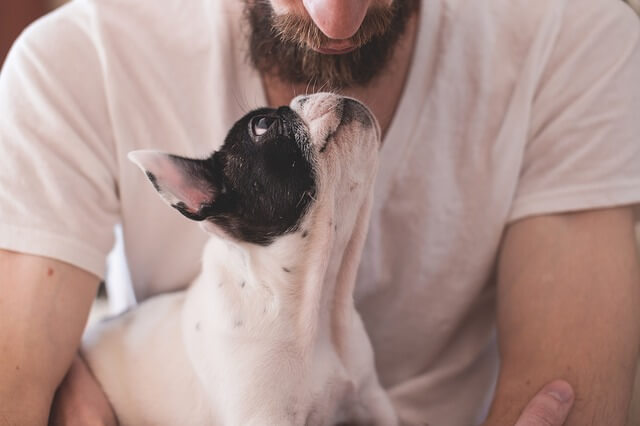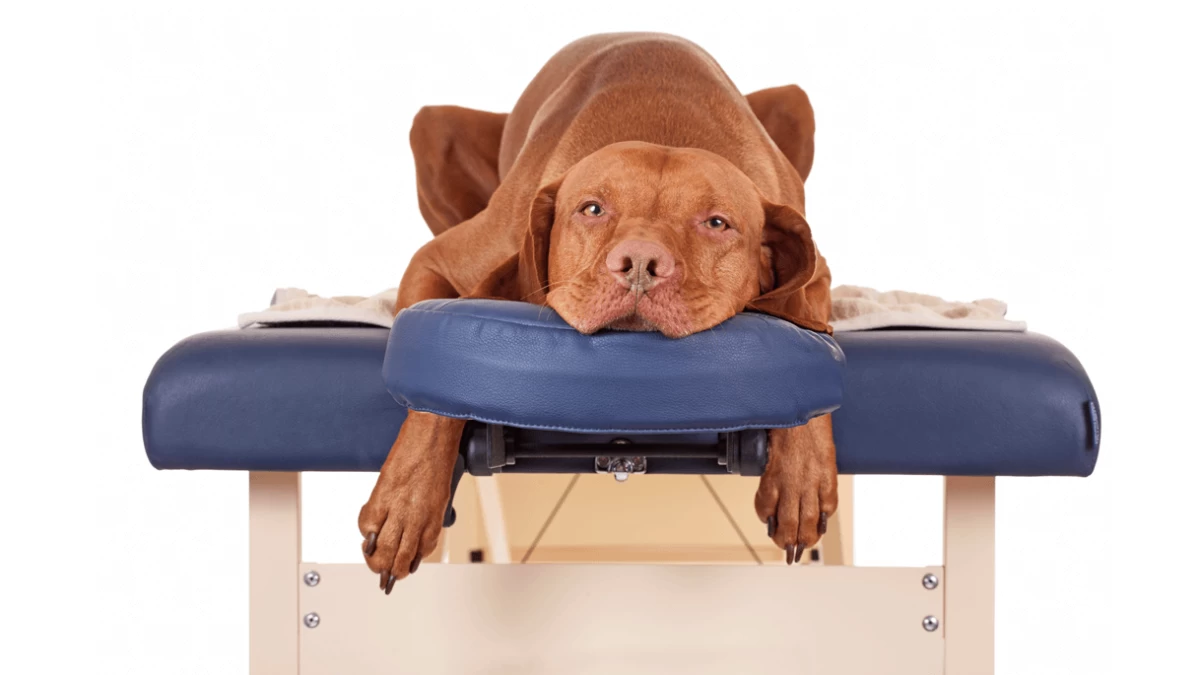Can a Massage Help My Dog? Here’s What Vets Say
11.03.2022.
Petting, rubbing the belly, and scratching behind the dog’s ears are all things your dog enjoys. However, dogs, like humans, enjoy receiving massages.
"You want me to massage my dog?" you're probably thinking. “Really?”
While it may appear silly, it is actually very beneficial to your dog. Doesn't it feel good to get a massage? Dogs, like us, have the same sensation. A massage can help them relax while also providing you with another opportunity to connect and bond with your best friend. But those aren't the only advantages.
How can a Massage Help My Dog?
Here are the top five reasons why massaging your dog is a good idea:
1. Stress and anxiety relief
Dogs are prone to becoming stressed or anxious. A loud noise, a thunderstorm, or a glimpse of a cat could be the cause. Whatever the reason, a massage can relieve your dog's tension and put them into a state of comfort, allowing them to forget about their worries.
RELATED: How Many Treats Can Your Dog Actually Eat?

2. Assist in healing
If your dog has injured themselves, a massage may be just what the doctor ordered. Massaging your dog can aid in rehabilitation, reduce pain and swelling, speed up the healing of strains and sprains, and keep scar tissue to a minimum. Of course, you should first seek advice from your veterinarian on doing this correctly and safely!
3. Enhances body functions
Massage can improve circulation, lower blood pressure, improve lymphatic fluid movement, strengthen your dog's immune system, aid digestion, stimulate the kidneys and liver, and encourage deeper breathing in your dog.
4. Enhances overall well-being
Humans feel refreshed, balanced, and revitalized after receiving a massage. After a good rubdown, your dog will feel the same way.
5. Increases the dog-owner bond
A massage may be novel to your dog, but once they realize how good it feels and that you're the one making them feel good, your bond and relationship will grow even stronger.
RELATED: 7 Tips for Keeping Dogs Comfortable During Car Rides
With all of the benefits of dog massage, how can you not try it? Let's take a look at the best way to massage your dog in order to reap the most benefits.
Massage Techniques for Your Dog
Massaging is certainly an enjoyable thing for our dogs. However, you need to know how to do it properly in order for your dog to be safe. Here are the steps you should take.
The first step
Choose a quiet area of the home for the massage to help your dog relax. If your pet is extremely fearful, do not attempt to massage them. To begin, gently stroke the area of interest. Lightly press your flat palms against the skin. Slowly move your hands in long, sweeping motions. Take note of any swelling, increased sensitivity, or pain while massaging. If it appears to be hurting your dog, stop.
RELATED: 7 Ways to Clean and Care for Your Dog’s Paws
The second step
Using the technique described above, begin at the head and neck and work your way down the body, gradually increasing pressure if your dog appears to enjoy it. Do not apply direct pressure to bones or joints. Avoid areas where your dog dislikes being touched.
The third step
Relaxation can be aided by a gentle massage at the base of the skull and the base of the tail. Remember to make the experience enjoyable for your dog - stop if they recoil, cry out, or appear to be in pain.
Dog Massage Techniques You Can Try At Home
While full-body, deep tissue massage should be left to professionals, here are some simpler, less intense dog massage therapy techniques you can try at home.
1. Backstroke
Vets recommend a simple, gentle backstroke to introduce your dog to canine massages. You can do this while watching TV with your dog. Stroke up and down either side of your dog's spine with very gentle pressure, beginning at the back of the head. Keep your hands off the bone.
According to vets, this type of back rub is calming and relaxing for dogs. It is a good dog massage for anxiety, especially for dogs afraid of human touch.
Touch can be healing for rescue dogs; massage helps them regain trust - it is something that is absolutely amazing to watch.
RELATED: Here Are 7 Ways to Naturally Stimulate Appetite in Dogs
2. Rub Your Dog’s Forehead
Try giving your best friend a head rub for another calming massage technique. Calming points are most commonly found on your pet's head. Begin at the tip of your dog's nose, where an acupressure point associated with calming and healing can be found. Gently run your thumb from the end of the nose to the top of the head, going back and forth slowly.
3. Glute and Thigh Rub
Many senior dogs have mobility problems as they age. Dogs, like us, are living longer lives. Certain inevitabilities accompany aging, but we can make our dogs more comfortable. Professional dog massage for arthritis should be performed under the medical supervision of a veterinarian. To keep muscles loose and flexible, some gentle compression can be done at home.
This dog massage therapy technique is designed to work on your dog's back legs and glutes. Gently press both thumbs into the thigh or glute muscle, forming a backward "C." Making clockwise thumb circles, slowly work your way across the entire muscle.
This thumb-circle technique is also helpful in massaging the base of the neck. Because they can't reach their necks, dogs adore it.
4. Ear Massage
Even the most basic ear rub is appreciated by the majority of dogs. However, with a bit of practice, you can provide your pet with a soothing, therapeutic ear massage. Begin this simple massage by placing your thumb on the inner side of your dog's ear, near the base of the ear flap, and your index finger outside the ear. Slowly stroke out towards the end of the ear with gentle pressure, finishing with a gentle pull.
RELATED: Does Thundershirt Work & Where I Can Get It
Conclusion
When massaging your dog, maintain a calm, relaxed demeanor, as animals are sensitive to human energy. You should introduce your dog to your calm space in a low, soothing voice. It's also critical to keep an eye on your dog's body language. A happy dog will stretch, lean into your hands, and be calm to the point of falling asleep. You'll eventually be able to communicate with your dog using only your hands.
World Dog Finder team







Share